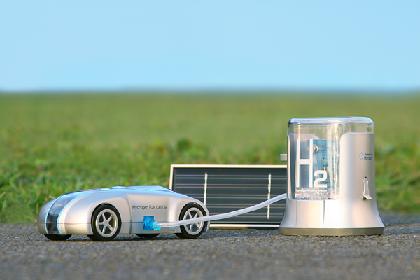387.27ppm
Atmospheric CO2 for December 2009
CO2 Data Set: | Original data file created by NOAA on Thursday January 7, 2010 (14:19:55) |
Measuring Location: | Mauna Loa Observatory, Hawaii |
Data Source: | Earth Systems Research Laboratory (ESRL) / National Oceanic and Atmospheric Administration (NOAA) |
Why is CO2 significant? | Carbon dioxide (CO2) is the chief greenhouse gas that results from human activities and causes global warming and climate change. To see whether enough is being done at the moment to solve these global problems, there is no single indicator as complete and current as the monthly updates for atmospheric CO2 from the Mauna Loa Observatory. |
What is the current trend? | The concentrations of CO2 in the atmosphere are increasing at an accelerating rate from decade to decade. accelerating from decade to decade. The latest atmospheric CO2 data is consistent with a continuation of this long-standing trend. |
What level is safe? | The upper safety limit for atmospheric CO2 is 350 parts per million (ppm). Atmospheric CO2 levels have stayed higher than 350 ppm since early 1988. |
The central premise of the Pickens Plan that the plan wants to divert natural gas from power generation to transportation could be subject to considerable debate. I think it is important that as members of the plan we have to be flexible to counter any critique of the plan that it is impractical to expect power production to switch out of natural gas. Combined cycle power plants currently use both gas and steam turbines, in that order, to generate relatively clean power. The more polluting plants are the oil and coal plants which require scrubbing technology to generate power as cleanly as the combined cycle plants.
It is important that we present the thrust of the Pickens Plan as first, targeting buses and trucks and second, as creating a choice for consumers between gasoline-based cars and gas based cars.
The paragraph in the article that highlights the infrastructure that lets people use gas-based automobiles can also be expanded to the current gas stations, giving consumers the option to use gasoline, gas, diesel and electricity if they have plug-in hybrid or electric vehicles, with the emissions standards set high enough to make natural gas, hybrid and electric vehicles more attractive. Such a strategy brings together the energy diversification, energy security and environmental lobbies.
Electric vehicles as will increase the demand for electricity and so will high-speed rail which could create millions of jobs in infrastructure and engineering which the economy desperately needs (the 21st century equivalent of the Eisenhower Interstate System in the United States), producing structurally the opposite effect of what the Pickens Plan really needs: more natural gas being used up in power generation, and this is could be the bias of the Obama administration as well that of Detroit and other foreign car makers.
This is still good for the Pickens Plan insofaras the production of more U.S.-based natural gas. We may not get all the natural gas cars we want, but we will get more U.S. natural gas production and the oil and coal workers can move to work in the natural gas fields.
Nuclear, solar, wind and natural gas, in that order, can together entirely eliminate the need for oil and coal in power generation and transportation, if we, as a country, commit to such a diverse strategy, in 20 years.
Solar, wind and hydrogen can be expected to replace all non-renewable energy sources by the century's end, extending the life of the cleaner non-renewables such as nuclear, natural gas, while cleaning up the use of oil and coal, making renewables the lead sources of energy and the non-renewables auxiliary.
It is important that we present the thrust of the Pickens Plan as first, targeting buses and trucks and second, as creating a choice for consumers between gasoline-based cars and gas based cars.
The paragraph in the article that highlights the infrastructure that lets people use gas-based automobiles can also be expanded to the current gas stations, giving consumers the option to use gasoline, gas, diesel and electricity if they have plug-in hybrid or electric vehicles, with the emissions standards set high enough to make natural gas, hybrid and electric vehicles more attractive. Such a strategy brings together the energy diversification, energy security and environmental lobbies.
Electric vehicles as will increase the demand for electricity and so will high-speed rail which could create millions of jobs in infrastructure and engineering which the economy desperately needs (the 21st century equivalent of the Eisenhower Interstate System in the United States), producing structurally the opposite effect of what the Pickens Plan really needs: more natural gas being used up in power generation, and this is could be the bias of the Obama administration as well that of Detroit and other foreign car makers.
This is still good for the Pickens Plan insofaras the production of more U.S.-based natural gas. We may not get all the natural gas cars we want, but we will get more U.S. natural gas production and the oil and coal workers can move to work in the natural gas fields.
Nuclear, solar, wind and natural gas, in that order, can together entirely eliminate the need for oil and coal in power generation and transportation, if we, as a country, commit to such a diverse strategy, in 20 years.
Solar, wind and hydrogen can be expected to replace all non-renewable energy sources by the century's end, extending the life of the cleaner non-renewables such as nuclear, natural gas, while cleaning up the use of oil and coal, making renewables the lead sources of energy and the non-renewables auxiliary.
Google Inc. Builds Massive Rooftop Solar Panel Array
Last October, Google announced that they are going for massive solar energy production and launched the largest solar panel installation to date on their corporate campus in Mountain View, CA headquarters. By June 18th the installation was almost done and a total of 9,212 solar panels making up about 1,600 kilowatts peak time power capacity. Panels cover the rooftops of eight buildings and two newly constructed solar carports at the Googleplex. See photo below:
Google‘s solar panels are projected to produce enough electricity for approximately 1,000 California homes or 30% of Google‘s peak electricity demand in our solar powered buildings. This is the biggest solar panels array ever built in the us mainly due to the huge costs involved. Google did not share any prices with us but we can estimate that its few million dollars at least.
The thing that made me really impressed with Google‘s new Solar System is that they managed to build online monitoring station where people can see the solar panels performance in real time which is really awesome. Check out this link here: Google Solar Panels Monitoring Station. On the graphic we can clearly see that during the night there is zero generated power and at noon is the peak. In fact that clearly shows how solar power is generated throughout the day
The best way to analyze the generated power is to cut the peak on half and assume that only half of the peak time generated power will be used/usable and the rest should be stored for later use (during the night). Google has huge amount of batteries but they don‘t store all the excess energy due to the nature of their business as the power requirements during the day are about 90% of their needs and therefore they do not need to store energy for the night.
Another really cool thing Google implemented was the Plug-In-Hybrid cars that are powered by electricity. Those cars are loaded during the day by the huge solar panel array and their own garage rooftop solar system (only a fraction of the whole system).
Google is going for clean energy with the hopes that many more large corporations will follow their steps and help keep our environment clean
Live Solar Panel Camera
This is a live shot from a security camera facing one of the two solar panel arrays outside of www.aiso.net's data center. Since its live, come back often to see the latest shot of their solar panels. Also, see the many other ways that they are committed to helping the environment that is beyond just electricity use, by viewing our hosting ecosystem.

Image Updated: Sunday, January 24, 2010 8:35:32 AM PST
Badges




































